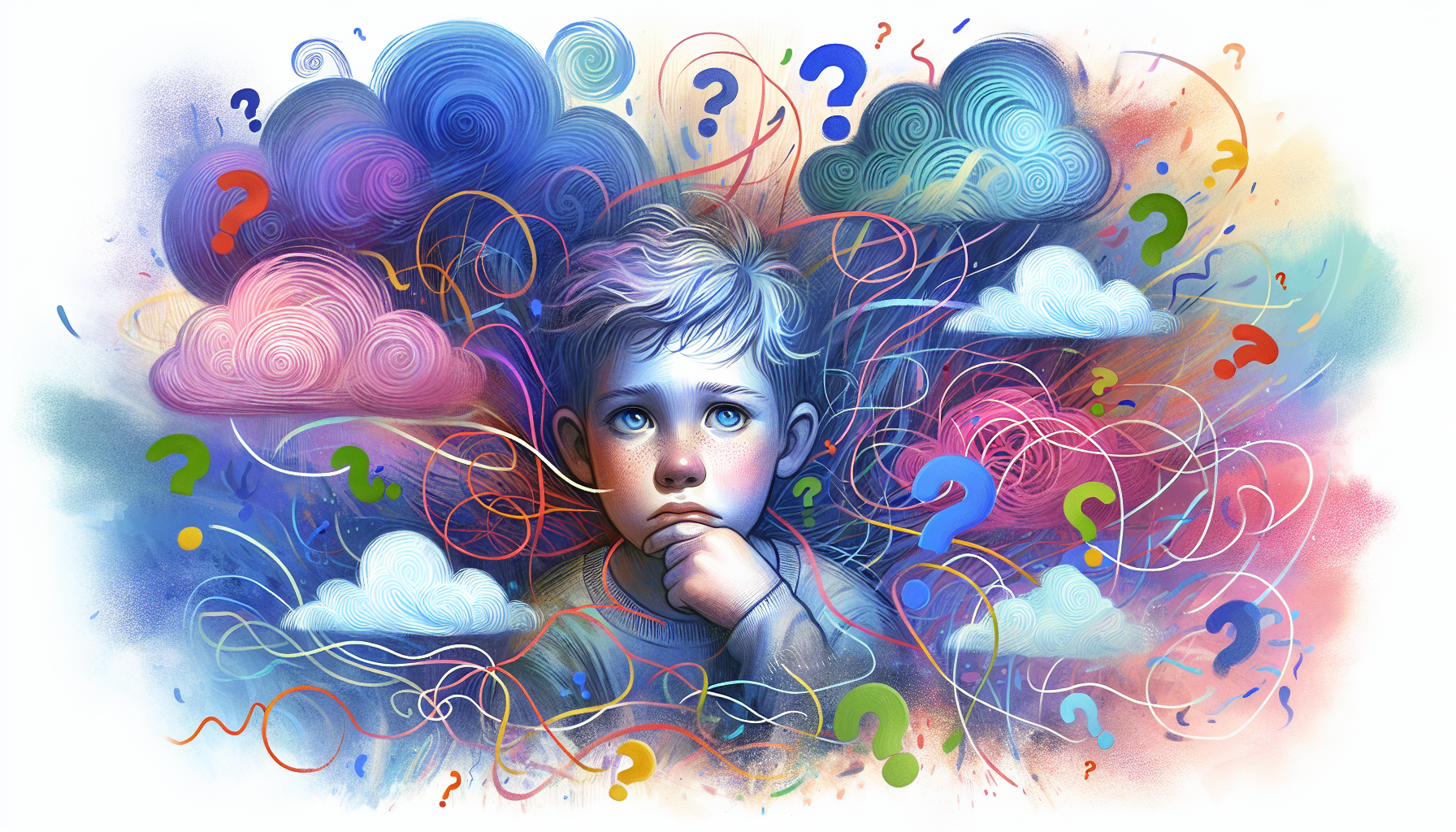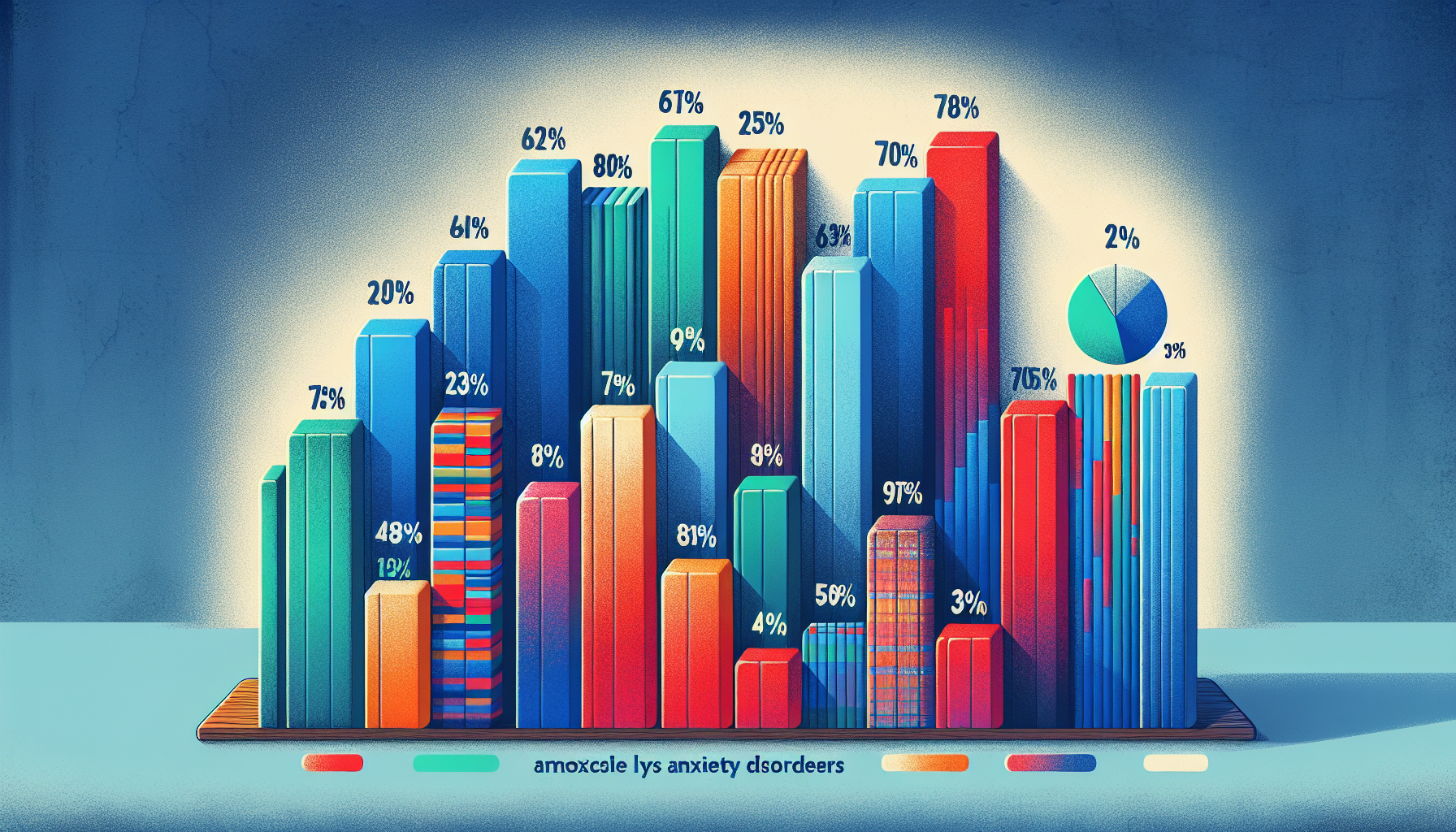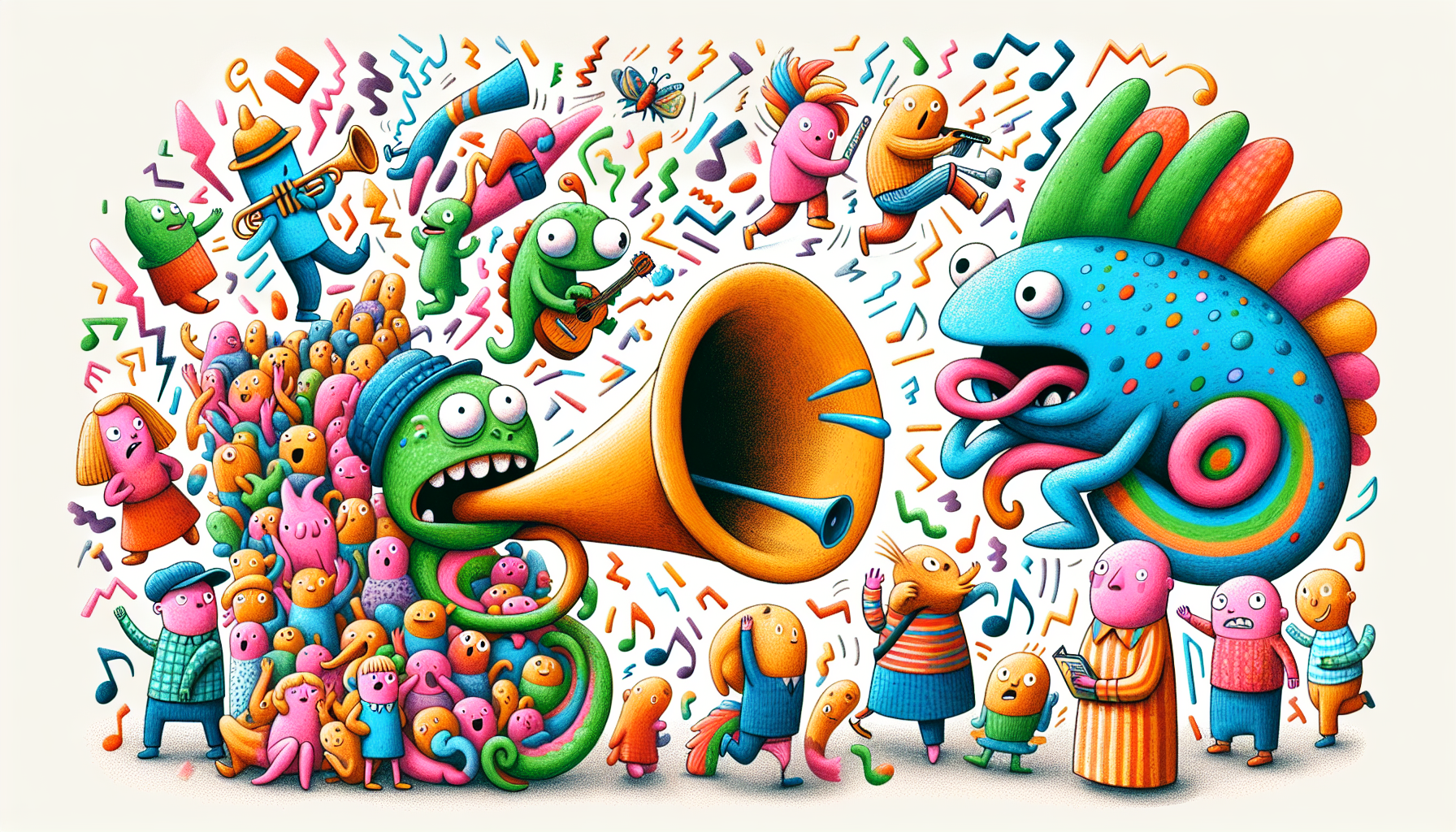Anxiety in autism affects many and can complicate daily life. This article explains why autistic individuals often experience heightened anxiety and offers practical tips to manage it. Understanding these aspects can help caregivers provide better support.
Key Takeaways
- Anxiety is prevalent among autistic individuals, with 40-50% clinically diagnosed, highlighting the need for targeted management strategies.
- Identifying anxiety symptoms in autism can be complex due to symptom overlap, necessitating careful diagnosis to create tailored treatment plans.
- Effective anxiety management in individuals with autism includes therapeutic approaches like Cognitive Behavioral Therapy, medication when appropriate, and practical strategies such as mindfulness and structured routines.
Understanding Anxiety in Autism Spectrum Disorder

Anxiety is a natural response to stress, marked by heightened alertness and feelings of fear, apprehension, and worry. For many autistic individuals, anxiety can be a significant part of their daily experience. According to a survey by the National Autistic Society, 59% of autistic individuals reported that anxiety significantly impacted their daily functioning. This statistic alone underscores the importance of addressing anxiety in the context of autism.
One reason anxiety is so prevalent among autistic people is that they often feel misunderstood or rejected, which can exacerbate their feelings of anxiety. Two prevalent theories explain why anxiety is common in autistic individuals. First, the neurological differences in autistic brains may predispose them to higher anxiety levels. Second, the social and sensory challenges they face daily can contribute to persistent anxiety symptoms.
It’s important to distinguish between everyday anxiety and a generalised anxiety disorder. Persistent anxiety symptoms that continue even after a stressor is removed may indicate an anxiety disorder. Understanding this distinction is crucial for effectively addressing and managing anxiety in autistic individuals.
Prevalence of Anxiety in Autism Spectrum Disorders

Anxiety disorders are notably common among individuals with autism spectrum disorders (ASD) and other psychiatric disorders. Research estimates that 40-50% of autistic individuals are clinically diagnosed with anxiety, with around 40% experiencing significant anxiety. This high prevalence highlights the urgent need for effective strategies to manage anxiety in this population.
Among the various types of anxiety disorders, social anxiety disorder is the most common form found in people with autism. Additionally, specific phobias are frequently reported, further complicating the daily lives of autistic individuals. Understanding the prevalence and types of anxiety in autism helps shape targeted interventions and support systems.
Identifying Anxiety Symptoms in Autistic Individuals
Identifying anxiety symptoms in autistic individuals can be challenging due to their overlap with autism traits. Increased repetitive or compulsive behaviors, for instance, can be a sign of underlying anxiety. Variations in behavior, such as increased agitation or withdrawal, may also indicate shifts in mood or anxiety levels.
Severe anxiety can lead to emotional meltdowns and even self-injury, highlighting the importance of early identification and intervention. Additionally, high levels of intense anxiety can cause exhaustion and burnout, making it crucial to address these symptoms promptly.
Physical manifestations of anxiety, such as changes in appetite, are also common. Identifying both behavioral and physical signs of anxiety is vital for effective support. Early identification of these symptoms allows caregivers and professionals to better manage and treat anxiety in autistic individuals.
Common Triggers of Anxiety in Autism

Knowing the common triggers of anxiety in autistic individuals is key to effective management. Difficult social interactions and sensory overload are significant contributors to heightened anxiety levels. Sensory overload, caused by factors like crowded spaces or bright lights, can lead to increased anxiety and compulsive behaviors.
Unexpected changes in routine are another common trigger for anxiety among autistic individuals. Routine disruptions, such as changes in daily plans or homework expectations, can escalate anxiety levels. Unstructured time, such as waiting for the school bus or transitions between activities, can also significantly increase anxiety.
Social situations, especially unexpected changes or large gatherings, can provoke significant anxiety in autistic individuals. Each autistic individual may exhibit unique manifestations of anxiety, ranging from asking excessive questions to withdrawing or displaying disruptive behavior. Being aware of these triggers permits better preparation and intervention strategies to mitigate anxiety.
Diagnosing Anxiety in Autism Spectrum Disorder
Diagnosing anxiety in individuals with autism spectrum disorder (ASD) requires careful consideration due to the overlap of symptoms. The Diagnostic and Statistical Manual of Mental Disorders, Fifth Edition (DSM-5), is widely used for diagnosing both ASD and comorbid conditions like anxiety. However, the overlap of autism symptoms and anxiety signs necessitates careful differentiation during the diagnostic process.
Clinicians often consider behavioral history and environmental context to differentiate between overlapping symptoms when diagnosing anxiety in autistic individuals. This approach helps in distinguishing between autism traits and signs of anxiety, which can complicate the identification process.
Accurate diagnosis is vital for creating appropriate treatment plans and support strategies. Understanding the challenges in diagnosing anxiety in autism enables caregivers and professionals to better support autistic individuals.
Effective Therapies for Anxiety in Autism

Treating anxiety in individuals with autism involves various therapeutic approaches, each tailored to the unique needs of the individual. Cognitive Behavioral Therapy (CBT) is one such effective method, along with other therapeutic approaches like Dialectical Behavioral Therapy (DBT) and mindfulness practices.
These therapies aim to reduce anxiety symptoms and improve overall well-being.
Cognitive Behavioral Therapy
Cognitive behavioural therapy helps autistic children manage anxiety by changing negative thought patterns and behaviors. This therapy is particularly effective when tailored to the specific needs of autistic individuals, allowing them to address their unique experiences and challenges.
Working with a therapist, autistic individuals can learn techniques to manage their anxiety more effectively. CBT focuses on improving social communication skills and reducing repetitive behaviors, which can help alleviate social anxiety and other anxiety disorders.
Other Therapeutic Approaches
Dialectical Behavioral Therapy (DBT), derived from CBT, has been reported as helpful by some autistic individuals for managing emotions. DBT focuses on helping individuals understand and regulate their emotions, which can be beneficial in reducing anxiety.
Expressive art therapy, including creative writing and music, is another effective approach for reducing anxiety by calming the nervous system. Mindfulness practices, which involve techniques that help individuals focus on the present moment, can also reduce anxiety by calming the mind.
Combining these practices with expressive arts can enhance anxiety management strategies for individuals with autism.
Medication Options for Anxiety in Autism
While therapeutic approaches are often the first line of treatment, medication can also play a role in managing anxiety in autistic individuals. Citalopram and buspirone are medications that may provide some benefit to children with autism facing anxiety. Beta-blockers like propranolol can be used for temporary anxiety relief during stressful situations.
However, the research on the effectiveness of anxiety medications for individuals with autism is limited, with no major clinical trials establishing clear protocols. When prescribing SSRIs for autistic individuals, it is recommended to start with a low dose and adjust gradually. This cautious approach is necessary because children with autism taking SSRIs may experience specific side effects such as increased impulsivity and sleep issues.
Medications should be prescribed cautiously, as individuals with autism can be particularly sensitive to side effects. Collaborating with healthcare professionals to monitor and adjust medication can help manage anxiety effectively.
Practical Strategies for Managing Anxiety

Alongside therapies and medications, practical strategies significantly aid in managing anxiety. Relaxation methods such as meditation, mindfulness, yoga, and exercise can help reduce anxiety. These activities promote a sense of calm and well-being, which can be particularly beneficial for autistic individuals.
Visual schedules can help structure the day for individuals with anxiety, providing a clear and predictable routine. Engaging in self-soothing techniques like sensory tools can also help manage anxiety by providing comfort and distraction. Consulting with family or friends and seeking professional support from a GP is advisable for anxiety management.
Parents and caregivers can mitigate their stress levels by making small lifestyle changes and prioritizing self-care. Adopting these practical strategies helps individuals with autism and their caregivers manage anxiety and improve overall quality of life.
Role of Family and Caregivers in Managing Anxiety
Family members and caregivers play a crucial role in recognizing and managing anxiety in autistic individuals. Common comorbid conditions associated with autism, such as anxiety disorders, often require attention from family and caregivers. Several vulnerabilities make autistic individuals susceptible to anxiety, necessitating caregivers to be vigilant.
Early recognition of anxiety enables families to help autistic individuals develop essential coping skills for social situations. Bullying can significantly impact autistic individuals, exacerbating their anxiety and emphasizing the need for supportive family environments.
Support groups provide caregivers with an opportunity to connect with others facing similar challenges, which can alleviate feelings of isolation.
Summary
Managing anxiety in autism spectrum disorder requires a multifaceted approach, combining therapies, medications, practical strategies, and strong support systems. By understanding the nature, prevalence, symptoms, triggers, and treatment options, caregivers and autistic individuals can develop effective plans to manage anxiety.
Implementing the strategies and seeking appropriate support can significantly improve the quality of life for autistic individuals. As we continue to learn and adapt, the hope is to create a more inclusive and supportive environment for those with autism.
Frequently Asked Questions
What are the common signs of anxiety in autistic individuals?
Common signs of anxiety in autistic individuals include increased repetitive behaviors, changes in appetite, emotional meltdowns, and physical symptoms such as exhaustion and burnout. Recognizing these signs is crucial for providing appropriate support.
How prevalent is anxiety among individuals with autism spectrum disorder?
Anxiety is highly prevalent among individuals with autism spectrum disorder, with research indicating that 40-50% are clinically diagnosed with anxiety and approximately 40% experience significant anxiety.
What therapies are effective for managing anxiety in autistic individuals?
Cognitive Behavioral Therapy (CBT), Dialectical Behavioral Therapy (DBT), expressive art therapy, and mindfulness practices are effective therapies for managing anxiety in autistic individuals. Consider exploring these options to find the most suitable approach.
Are medications effective for treating anxiety in autistic individuals?
Medications such as SSRIs, citalopram, and buspirone can be effective in treating anxiety in autistic individuals, though they must be prescribed with caution due to possible side effects.
How can family members and caregivers support autistic individuals with anxiety?
Family members and caregivers can effectively support autistic individuals with anxiety by recognizing early signs, fostering a nurturing environment, assisting in the development of coping skills, and facilitating connections with support groups. This comprehensive approach significantly enhances emotional well-being.
